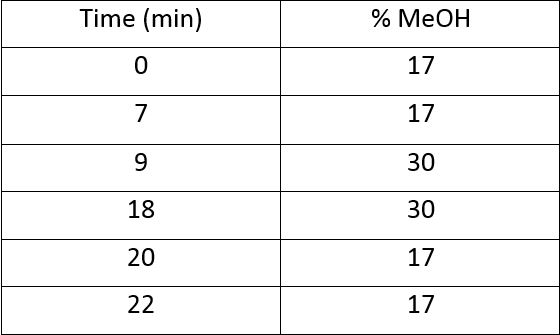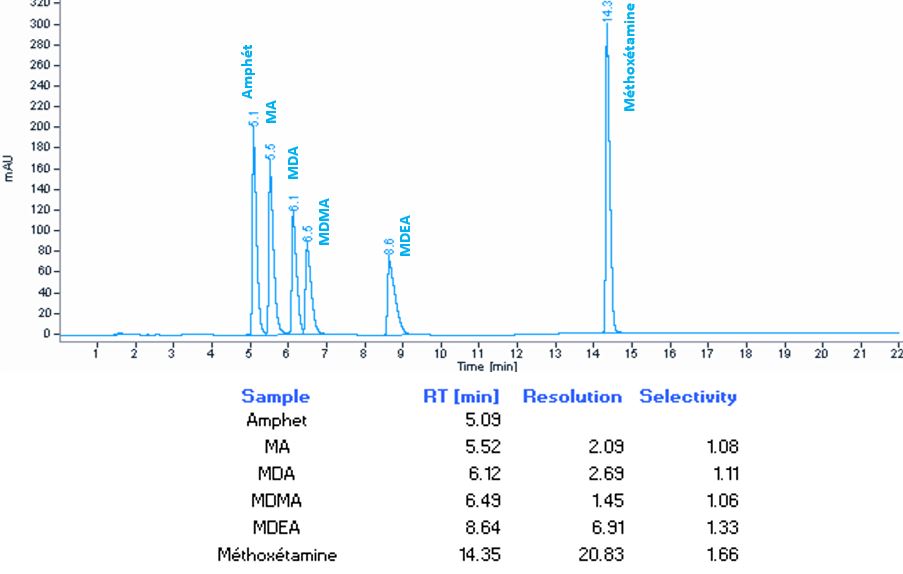|
Introduction
Amphetamine type stimulants (ATS) are synthetic drugs such as amphetamine and 3,4-methylene-dioxy-methamphetamine (MDMA), also known as ecstasy. Their occurrence on the French market has considerably expanded in recent years, with an increase of 50% in 2016 compared to the previous year. The illicit drugs department of the police forensic laboratory of Lyon had already developed a screening method for ATS with high performance liquid chromatography coupled to diode-array detector (HPLC-DAD), on a 25 cm column and mobile phase with acetonitril (ACN). However, this important increase and the necessity to give analytical results within custody time required to switch to a new generation of column, exhibiting microporous particles. This led to the development of a new and faster screening method. The optimisation was mainly carried out on a mixture of ATS, called a screening grob, composed of amphetamine, methamphetamine, MDA, MDMA, MDEA and methoxetamine. The mobile phase and the gradient were modified. ATS were identified by their UV spectrum at 280 nm.
Experimental conditions
The previous gradient, from 13% to 25% of ACN, was tested on the new column (Phenomenex Kinetex C18 150 mm × 4.6 mm i.d., 2.6 µm) with a flow rate of 0.9 mL/min. It did not allow MDA and MDMA on the screening grob to be separated. In order to determine which proportion of ACN permitted these coumpound,to be separated, a retention model was plotted at 8, 13 et 18% of ACN : the selectivity of MDA and MDMA could not be improved with this solvent. That is why ACN was replaced with methanol (MeOH), another solvent with different physicochemical properties. In the same way, a retention model was plotted at 17% and 23% of MeOH. Then, the MeOH gradient shown in Figure 1 was put in place. The analysis time was set at 22 min, including an equilibration time restoring the initial conditions of the following run.
Results
Experiments with ACN did not allow MDA and MDMA to be separated (resolution <1). Analysis at 17% of MeOH permitted all compounds to be separated. The gradient created from these tests allowed the ATS to be separated (resolution > 1.4), as shown on Figure 2. The last compound, methoxetamine, was eluted at 14min, which permitted an analysis in 22 min compared to 42min with the original set-up
Conclusion
The developed screening method allowed these ATS to be separated with a faster, 22min-long, method. Moreover, this method was validated in compliance with ISO 17025 standard criteria.
|
|

MeOH gradient of the screening method

Chromatogram and results of the screening grob analysed with the MeOH gradient with the new column
|



